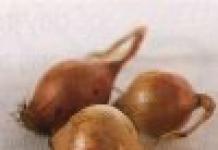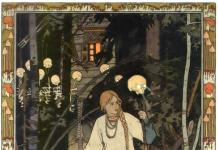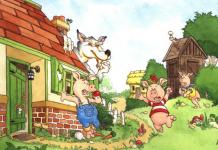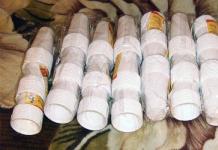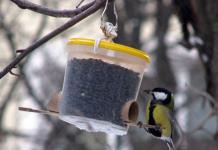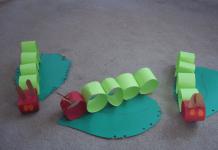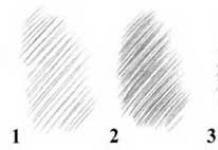Flower bouquets are beautiful but short-lived. However, there are some that can be admired for many months, or even years. Among florists, they bear a common name, and a bouquet of such flowers can decorate a home for a long time. These plants can belong to different families, but they are united by the ability to maintain shape and color over a long period.
This is a perennial dried flower, but in our latitudes it is grown as an annual. The stem is branched, reaching 70 cm in height. Inflorescences are white, with a large yellow center. The diameter of the inflorescence is 1.5–2 cm. Ammobium begins to bloom in mid-June, flowering continues until the first frost. 
Annual plant of American origin. Its stems can be simple or branched, sometimes they grow up to one and a half meters in height. Inflorescences of decorative species such as tailed, dark or paniculate are collected in long spikelets or panicles. They can be of various colors: golden, purple, red, etc. Flowering begins in June and stops with the onset of autumn cold weather. 
Did you know? is not limited to decorative species. For thousands of years, this plant has been the staple grain crop of the indigenous peoples of America. The Spaniards called it "the wheat of the Aztecs" and "the bread of the Incas". It is also used as food for pets. This plant is also widely used in amaranth oil, especially valuable.
The genus belongs to the amaranth family. About 60 species of this dried flower are known, among them there are both annuals and perennials, but in our country, as a rule, annuals are bred, as they cannot withstand the winter cold.
Plant height reaches 90 cm. Small flowers are collected in spectacular inflorescences, which can be of various shapes: feathery, comb, spikelet. Their colors can be red, purple, yellow, etc. Celosia blooms from late June to autumn frosts. 
This flower is better known as immortelle... It belongs to the Aster family. The plant can be perennial, but it is grown as an annual. The stem is straight, reaches a meter in height. The flowers form large inflorescences-baskets. Their color is very diverse - golden, red, white-pink, purple, etc.
There are more than 600 species of immortelle. The most famous are bracts gelichrisum, milford gelichrisum, and sandy gelichrisum. Bloom - from June to October. 
It is an annual plant from the Asteraceae family. It is also called dried flower... The stems of the xerantemum are straight, branched. Height up to 60 cm. Inflorescences are lilac, white or pink baskets. In temperate climates, it blooms from mid-summer to early autumn. 
This plant is more often called. It is annual, sometimes biennial, belongs to the family of Asteraceae or Compositae. It has a straight, branched stem reaching one and a half meters in height. Inflorescence is a basket of red, orange or yellow. Outwardly it resembles. Bloom from June to September. 
Did you know? Buddhist monks dye their robes with the dye extracted from cartamus, and in cosmetology safflower oil is valued as softening and strengthening the skin.
Like many others on our list, this dried flower belongs to the Aster family. The stem is erect, grows up to 90 cm. The plant is perennial, but there is also an annual species. Small tubular flowers form a spectacular spherical inflorescence up to 4 cm in diameter, in various shades of yellow. Craspedia blooms in August and September. 
Kermek (limonium)
This type of dried flower belongs to the leaven family. Among the numerous representatives of this family, you can find both shrubs and herbaceous specimens, among them both annuals and perennials can be found. The height of the plants, depending on the type and growth conditions, is from 30 to 1.3 m. This plant blooms from July until the end of autumn.  Outwardly, the inflorescences look very impressive - slightly wrinkled and elongated-oblong panicles of the most varied colors. They can be purple, green, yellow, white and pink.
Outwardly, the inflorescences look very impressive - slightly wrinkled and elongated-oblong panicles of the most varied colors. They can be purple, green, yellow, white and pink.
In appearance, with proper care, they resemble a colored cloud. A wild plant, broadleaf kermek, is also called tumbleweed, since in autumn, with a strong wind, dry inflorescences often break off the stem and roll across the steppe. 
Although this Mediterranean plant is not yet a favorite among gardeners, it certainly looks sophisticated in its graceful simplicity. This variety of dried flowers is ideal for rustic plantings, as well as for complex landscaping solutions. Katananche was cultivated in Europe as early as the 16th century.
The plant has only 5 species. The most popular variety has a delicate blue flower that resembles chicory. Katananche flowers can also be white, yellow and purple, depending on the species. The petals have serrated edges. The height of the erect stem is up to 60 cm.
May and June are the flowering time of this dried flower. But some varieties of katananche, for example, "Capids Dart", can bloom right up to the very frost. This plant is also a frost-hardy species, the katananche bushes do not die even in a frost of –30 ° С. The information that katananche lives for only two years is erroneous. It's just that this plant, after 2-3 years of flowering, partly loses its decorative effect and requires more frequent division than other perennials. 
Briza (shaker)
This plant of the family of cereals was described by the ancient Greek physician Galen, but in addition to useful healing properties, it is often used in decorative interiors. "Cuckoo tears"- this is how the people called this type of dried flower because of the unusual inflorescence, reminiscent of droplets (tears) on thin stems. A slight breeze of wind is enough for them to start swaying, which adds a certain flavor to the breeze.
In the wild, the breeze is found in Europe, Africa, in the western part of Asia, as well as in South America. These are usually annuals and perennials. Stems are thin and solitary, erect with branching from below up to 80 cm high. The apical inflorescence resembles a spreading panicle in shape from 3 to 20 cm long and consists of 20-50 spikelets. Spikelets are rather large, drooping, 10–25 mm long. The cones-tears themselves are round, ovoid, or triangular in shape. At the beginning of flowering - green, with time brownish-golden. 
Lagurus
This dried flower has another name - Haretail, because of the fluffy inflorescence, which really resembles a hare's tail. In stylized photos, this plant looks especially impressive.
Lagurus belongs to the annual cereal. Approximately 50-60 cm high. The plant blooms all summer, its fluffy white heads are often painted in different colors, making up spectacular bouquets of them. Lagurus is very fond of children because of the original shape of the inflorescence and soft, fluff-like leaves. 
It is a Compositae or Astera plant with a bright, bitter, musky odor. Distributed throughout the northern hemisphere in temperate climatic zones. Tansy grows up to one and a half meters in height and has bright yellow inflorescences, collected in baskets, on strong, elastic stems of dark green color. 
Important! Among gardeners, tansy is popular not only as an ornamental plant, but also as a natural remedy against mosquitoes, flies and other unpleasant ones. This dried flower is often used for medical purposes, it is not for nothing that another name for tansy is worm. It should also be remembered that the fruits and inflorescences of tansy are moderately poisonous.
Features of growing dried flowers
As a rule, plants of this type are very unpretentious, and their cultivation is not difficult. Seeds are usually sown in March-April, plants are planted in open ground in the second half of May, some thermophilic species in early June. Usually planted in a sunny area of a flower garden. Most species of these flowers are drought tolerant, they do not need additional watering. On the contrary, plants can suffer from waterlogging of the soil.
How to cut and dry flowers
Correctly selected dried flowers will cheer you up on the darkest and harshest winter days. In principle, any flower can be dried, but it is the dried flowers that do not lose their shape when dried and retain their bright colors.
The collection of dried flowers is carried out at different times, from spring to autumn, when the flowers, according to the florist, acquire the most suitable appearance for the future winter bouquet. Flowers should be cut in dry weather, preferably in the late morning. Plants are harvested in large excess in order to subsequently select the best specimens. In addition, dried flowers are very fragile and easily damaged during composition.  The easiest way to dry is natural... With this method, cut flowers are suspended from the stems, tops down. Drying is carried out in a dry, dark room - the sun's rays can change the colors of the flowers for the worse.
The easiest way to dry is natural... With this method, cut flowers are suspended from the stems, tops down. Drying is carried out in a dry, dark room - the sun's rays can change the colors of the flowers for the worse.
Important! Orange, pink, blue and purple colors are best preserved when dried. But the red flowers darken.
You can also dry the plant with cotton wool... To do this, use a box with a hole made in the bottom and a layer of cotton wool. The stem of the plants is threaded through the hole, the flower is covered with cotton wool, the box is hung in a dark room.
Cut flower buds are often dried in small containers, covered with substances that absorb moisture well. Calcined fine sand or semolina are used as such substances.
A bouquet of dried flowers, depending on the prevailing shades, will first of all require an appropriate decorative vase. So, bouquets with a predominance of various shades of yellow go well with wooden or clay vases. If a florist creates a multi-colored composition, then such work will look great in bright ceramics.
Was this helpful?
Thank you for your opinion!
Write in the comments which questions you have not received an answer to, we will definitely respond!
104
times already
helped
There are flowers that retain their shape and color for a long time. These plants belong to different families, but have a common name - dried flowers. Dried flowers make bouquets and wonderful compositions. An autumn bouquet of dried flowers will fill the space with aromas and will delight you with its beauty for a long time.
The art of making bouquets and flower arrangements, that is, floristry is a whole science, which anyone can master, showing patience and perseverance.
The art of floristry
Keeping flowers and plants at home began in Ancient Egypt, where, by tradition, flower wreaths and garlands were worn. When noble people were buried, the tombs were decorated with flower arrangements.
France is considered the birthplace of dry bouquets. Initially, such bouquets were used to flavor rooms, and since the 15th century they have become a fashionable interior element. Dried flowers adorned the clothes of fashionistas of that time.
 In modern schools of floristry, they teach how to correctly and beautifully compose compositions, cut and dry plants so that they do not lose their shape and color. They study various techniques for creating pictures and collages, the rules for making bouquets for various events.
In modern schools of floristry, they teach how to correctly and beautifully compose compositions, cut and dry plants so that they do not lose their shape and color. They study various techniques for creating pictures and collages, the rules for making bouquets for various events.
Floristry can be a fun hobby and develop creativity. After all, flower arrangements are not always made according to the rules. Each person has their own ideas about beauty and their own artistic tastes. You can do floristry yourself, using training videos, books and acquiring the necessary tools. Communication with nature will improve the state of mind and bring aesthetic pleasure.
Popular types of dried flowers
A dried flower is a dried plant that has retained its original appearance. But many dry plants break down quickly and require careful handling. Knowing which species to choose, you can make compositions with a long shelf life.
For decorative purposes, different parts of dry plants are used: stems, flowers, fruits, seeds, roots. Sometimes materials such as moss, bark, mushrooms, small driftwood are used to compose original compositions.
The list of plants most suitable for use:

Dry bouquets are often complemented with thorny plants: mordovnik, erythematosus, tease. Cereals become a beautiful element of flower arrangements: corn, haretail (lagurus), millet, maned barley, anthoxanthum, polypogon, miscanthus.

For fragrant bouquets, lavender and spicy herbs are often used: lemon balm, hyssop, lofant. Daring florists even add spices like cinnamon and cloves.
Professional florists, with the help of modern processing methods, began to use and more capricious types of dried flowers for floristry:
- amaranth;
- clematis;
- astilba;
- nigella;
- echinacea;
- lyatrice;
- evening primrose.
Many dried flowers are unpretentious plants that are resistant to temperature extremes and drought. They need to allocate a small well-lit area and there will be no special care for them. It is not necessary to grow plants in the garden - wonderful specimens can be found among the wildflowers.
Drying and storage of material
Dried flowers are harvested depending on the growth phase. To collect flowers, a flowering phase is needed, to collect fruits and seed pods - a phase at the end of the growing season. It is better to harvest plants in the morning in dry weather. It is necessary to pick intact, fresh and beautiful specimens together with a long stem, so that it is more convenient to dry the flowers.
Long-term observations show that some plants tend to change their color after drying. Lilac, pink, orange and blue plants retain their natural color better. The rest may acquire a different shade after drying.
Air drying
The easiest and most natural way is to air dry the plants in a shaded, ventilated place.

Small dried flowers are tied in small bunches and hung upside down. Plants with large inflorescences, ornamental cereals are laid out on paper in one layer. You can also decorate a country interior or a rustic kitchen with such multi-colored bunches. The material intended for the manufacture of panels and paintings must be dried on a board, giving the desired shape and fixing. Or apply the herbarium drying method.
Plants with tough buds and tough stems can be used for fresh compositions and then allowed to dry. These are limonium, bristle grass (ornamental millet), cattail (reed) and some other cereals.
Silica gel drying method
Large flowers are placed in an airtight container with gel and covered with another layer of gel. In order not to dry out the plants, it is necessary to check their condition daily. This drying takes no more than 2-3 days.
How to dry in the microwave
Microwave drying is a convenient way to quickly dry sturdy buds. But great care is needed here: the microwave should be turned on for a few seconds and constantly looked into it so that the delicate flowers do not collapse.
How to store dried flowers
To fix the shape, dried plants are coated with varnish or a special fixer. If necessary, the dried flowers are tinted. Store in a cardboard box in a dry place.
Dried flower decorations
Not all amateur flower growers know how to decorate a home interior with dried flowers. From all the variety of flower arrangements the following can be distinguished:

Dry bouquet in a beautiful decorative vase. It seems to be very easy to make. But you need to know some of the subtleties of the process. Choose a vase to match the main tones of the bouquet. For example, bright ceramics are perfect for a multi-color bouquet. Plants for the harmony of the bouquet should be of different heights, volumes and colors. Small flowers can be sprinkled with hairspray so that they do not crumble. Then the stems with inflorescences are tied into separate bundles with a special ribbon, and already from these elements a common bouquet is collected, which is also tied.
From tall plants (reeds, feather grass, lunaria, rowan branches), you can make a wonderful large bouquet in a floor vase. A small bouquet in a clay pot with a flirty bow tied will create a romantic mood. Bouquet composing is a creative process with no mandatory templates. A dry bouquet can be a wonderful gift for a loved one.
Paintings in the form of applications are first made on thick paper or plastic, the composition is fixed with glue, and then placed under a glass photo frame. In complex three-dimensional paintings, dried flowers with a preserved shape are used. A simple wall herbarium will perfectly decorate the hallway.
To make a panel, you first need to make a ring-shaped base from flexible rods, and then fix the dried flowers according to the selected sample or relying on your taste. This decorative item is perfect for the kitchen interior.
Author's crafts depend on imagination and creativity. Topiary is very popular - a tree of happiness. Bouquets of immortelles in a wicker cone will become original bells that can be hung in any room.
A wicker basket is well suited for composing compositions, which is filled with a floral sponge as a base for attaching dried flowers. They mask the sponge with moss, supplement it with small spruce cones or halves of acorns. If desired, in the future, flowers can be replaced with fresh ones. Sometimes gypsum or sand is used for the base.
Look very good wreaths of dried flowers on the wall or door... They take up little space and fill the room with a magical aura. The hoop is made of flexible willow and other rods or wire. Unnatural material should be masked with tightly woven threads.
Fragrant potpourri... Translated from French means assorted. To create it, fragrant plants are dried, then folded into a tightly closed container and kept in a dark place for up to two weeks. The finished potpourri is poured into a beautiful wide vase and placed in one of the rooms. A few drops of floral essential oil will prolong its scent.
Sachet (bags) with aromatic herbs... Dried fragrant plants (rosemary, lavender, mint, oregano) should be folded into small bags made of fine cloth and tied tightly. These fragrant sachets can be used to put things on the shelves or hang in the closet.
Dried flowers in human life
There are different opinions about the influence of dried flowers on human life. For example, the Feng Shui philosophy is extremely negative about the presence of dry plants in the house, considering them dead.
 But dry plants used to be alive and full of energy, which was partially preserved in them. Bouquets of dried flowers create a special kind atmosphere in the house, cheer up. It was not for nothing that in ancient times, bunches of dried plants hung in the houses of ordinary people. Keeping dry flowers along with live flowers will balance and maintain a favorable atmosphere in the home.
But dry plants used to be alive and full of energy, which was partially preserved in them. Bouquets of dried flowers create a special kind atmosphere in the house, cheer up. It was not for nothing that in ancient times, bunches of dried plants hung in the houses of ordinary people. Keeping dry flowers along with live flowers will balance and maintain a favorable atmosphere in the home.
The dry bouquet cannot be rearranged so as not to weaken its strength. It is not recommended to use plants painted with bright synthetic dyes, as there is no benefit from them. Only natural dyes are allowed.
If the bouquet begins to fade and lose its appearance, it is imperative to get rid of it. But bouquets associated with a pleasant event can be stored for a long time, as they become a kind of amulet for family members.
The summer season, with its cheerful colors and spicy floral aromas, passes very quickly. There are short, cloudy days in the fall, followed by cold winters. And everyone wants to feel once again in a blooming summer park. Bright sunny bouquets of dried flowers come to the rescue. They fill the interior with delicate scents and warm shades. Making bouquets of dried flowers is not only an effective way to decorate your home, but also a very entertaining activity. Even a beginner can cope with this task.
Many people believe that any dried flowering plant can be called a dried flower. In fact, this is not the case. Florists claim that after drying and pruning, not all representatives of the flora are able to maintain integrity and external aesthetics. At first glance, it seems that the most beautiful dried flowers are obtained from luxurious flowering crops. But in fact, the “queens” and “princesses” of the garden, after drying, lose their bright colors and crumble from one touch. Specially grown species and varieties of dried flowers are used for artistic and decorative purposes. To compose various compositions, you can use any part of the dried flower: from the bud and flower, to seed pods, and fruits.
If we compare dried flowers with other cultivated and field plants, then their durability is much higher. But in order to extend this period, plants must be treated with special means. However, many connoisseurs of bouquets of dry plants do not bother themselves, and at the beginning of the new season they replace compositions that have lost their aesthetics with new bouquets. Dried flowers are unpretentious. They do not take up a lot of time and space on the site. Unfavorable weather factors do not frighten them either. They have enough sunlight and a little care.
Types and varieties
In order for a beginner not to get confused in the variety of varieties and types of dried flowers, it is enough to start acquaintance with the most famous specimens:
- ... It is famous for its species and varietal diversity. All specimens are strikingly different from each other in external dimensions, shape and color. Dried flowers are harvested at the moment when the flower is fully opened.

Helipterum
- ... An excellent option for areas with long and cold winters. Outwardly, the plant resembles small baskets, collected on one bush. Florists harvest a long shoot with an inflorescence during the dissolution period.

Winged ammobium
- ... The flowers of this plant are corymbose, bright purple in color. In the midst of flowering, the plant is cut off and used in the future to compose artistic compositions.

- ... Among the inflorescences, there are double and simple species. Most often red or white. Breeders have developed a variety with many inflorescences. The plant is popularly called "cat's paws", because of the distant similarity of flowers with soft cat's paws. It is better to harvest dried flowers before its final dissolution.

Gelichrizum
- ... A plant with thin, branched stems. Inflorescences in the form of small baskets, with a red, pink, purple or white color. Only a complete dissolution is used as a floristic preparation.

Xerantemum
- ... Has an original appearance: large racemose inflorescences hanging from a strong stem. As soon as flowering begins, amaranth is cut off.

- ... Another decoration of the winter bouquet can be called this plant, with an orange, yellow or red inflorescence. Large flowers can only be cut after flowering.

Cartamus
- ... The most common element of floristic composition. It is valued for its beautiful decorative leaves and globular flowers of various shades (beige, lilac, pink, blue, scarlet).

Gomfrena
- ... Most of all, this plant with a dense inflorescence in the form of a ball reminds of the summer sun in a bouquet. Leaves are completely absent on the shoot. The color of craspedia is bright yellow. The material is harvested in whole bunches of several flowers.

Craspedia
- ... The inflorescences are quite large in size, collected in dense panicles and are cream, yellow, pink, red, orange, and even purple.

Celosia Cirrus
- ... The inflorescence is shaped like a ball of deep blue color and is very similar to a thorn.

Mordovnik
- ... Another extraordinary specimen from the series of "thorns". Inflorescences have a capitate, steel color, openwork leaves.

Feverweed
- ... The flowers of this garden planting do not attract florists at all, but the fruits are of great value for lovers of winter bouquets. The fruit is framed by thin sepals, bright orange in color. The shape and structure is reminiscent of a paper lantern.

- ... Inflorescences are numerous and spike-shaped, milky-white coloring and a delicate lilac frame add spectacularity. The herb is often used in wedding compositions.

Use in landscape design

Dried flowers are the most popular element of a rocky flower garden (). They are perfectly combined with various types of stone and do not require special care, are not capricious to the growing conditions. For such a composition, you should not choose delicate and fragile varieties. The erythematosus, breezes and other "thorny representatives" are best suited.

Beds with perennial or annual plants colorfully dilute the bright, original types of dried flowers. They are able to compete with the most refined representatives of the flora. A delicate, graceful scent adds a touch of romance and tranquility to the garden. Dried flowers often act as a background for univalent plants. After they have faded, dried perennial flowers continue to decorate the garden with their appearance.

Low, lush dried flowers are planted along the paths as a living curb. You can use lavender for this. It also helps in soft, unobtrusive division of the site into the required number of zones. The refined and deep color goes well with many garden plantings. An easily recognizable spicy scent completes the list of benefits.
Reproduction, planting and care

Dried flowers reproduce by seeds... Most species are planted immediately in open ground, as soon as the snow melts and the ground warms up enough. They delight gardeners with fast germination and flowering after a short period of time. Those varieties whose seeds need to be planted in a greenhouse are transplanted into open ground after one to two months (depending on the variety). These are more capricious representatives of dried flowers. Also requiring more careful care and attention.
Care
Plants must be provided with a sufficient amount of sunlight, systematic and sufficient watering, mulching and feeding (depending on the variety). Most dried flowers prefer loose, fertile soil.
If the soil is acidic, then before sowing it is fed, reducing the level of acids. Dried flowers do not tolerate stagnant moisture, it is important to provide a drainage layer.
Plants do not tolerate drafts. A rare exception is species that cannot tolerate direct sunlight. They need to provide shade or partial shade. Otherwise, they will not be able to become a good material for a winter bouquet, losing their strength and bright colors. Each variety is harvested according to its own rules.
Video - garden dried flowers
The great Russian poet once wrote: "I love the lush wilting of nature." However, dried flowers retain their former beauty and aroma even in the cold season. Experienced florists create all sorts of compositions that are used to decorate residential buildings, offices and educational institutions. In nature, there are a huge number of immortelle plants. Some of them grow in forests, meadows and near water bodies. Others are specially grown on the territory of country houses in order to contemplate their beauty not only in summer, but also in winter. Let's go to the kingdom of unfading plants and get to know some of them. We will learn how to dry them and make bouquets with our own hands.
Unforgettable dried flowers among lush greenery
 In nature, there is a special kind of plants that are able to maintain natural beauty for 2 years. Florists use them to create winter bouquets and decorative compositions. After all, dried fruits, inflorescences and seed pods do not disintegrate from the gentle touch of the hands.
In nature, there is a special kind of plants that are able to maintain natural beauty for 2 years. Florists use them to create winter bouquets and decorative compositions. After all, dried fruits, inflorescences and seed pods do not disintegrate from the gentle touch of the hands. 
Some dried flowers lose their color brightness after cutting. Experienced florists use special dyes to correct this deficiency.
Most immortal plants belong to the following families:
- cereals;
- aster;
- umbrella;
- lead.
Consider the popular names and photos of perennial dried flowers that our compatriots grow on their personal plots.
Snow-white pearl anaphalis
 The plant belongs to the "Astrovye" family. In nature, it grows in North America, where the Indians used it to prepare healing potions. The cultivated version is about 40 cm high bushes with brittle shoots. The leaf plates are bluish or silver colored. Their surface is covered with small villi. The buds are in the shape of baskets. They are collected in corymbose inflorescences, which are located at the tops of erect shoots.
The plant belongs to the "Astrovye" family. In nature, it grows in North America, where the Indians used it to prepare healing potions. The cultivated version is about 40 cm high bushes with brittle shoots. The leaf plates are bluish or silver colored. Their surface is covered with small villi. The buds are in the shape of baskets. They are collected in corymbose inflorescences, which are located at the tops of erect shoots.
Paniculata gypsophila
 The perennial grows up to 120 cm in height. Consists of many stems that form a magnificent openwork crown of the bush. Delicate snow-white or pinkish buds are collected in paniculate inflorescences.
The perennial grows up to 120 cm in height. Consists of many stems that form a magnificent openwork crown of the bush. Delicate snow-white or pinkish buds are collected in paniculate inflorescences.
Common mordovnik
 The culture is distinguished by erect stems covered with barely noticeable villi. It grows up to 1 m in height. The buds consist of many spiny twisted leaves. They form the original blue balls.
The culture is distinguished by erect stems covered with barely noticeable villi. It grows up to 1 m in height. The buds consist of many spiny twisted leaves. They form the original blue balls.
The plant is able to maintain its original shade for a long time. Therefore, Mordovik often appears in "immortal" bouquets and compositions.
There are many annual dried flowers that are grown in their summer cottages by fans of flora:

In addition, orange-colored physalis lanterns are used to create winter bouquets. Coniferous cones. The silvery fruits of lunaria. Do not forget about wild flowers and cereal crops such as wheat or oats. However, in order to get high-quality material for creativity, you need to know how to properly cut dried flowers and prepare them for compositions. Find out what the experts advise.
Competent drying of "immortelles"
 Plants used to create flower arrangements are cut in the morning in sunny, dry weather. The buds should not be fully opened to maintain the elasticity of the petals. The cut elements are tied into small bundles. Then they are hung upside down. Dry in a dark room with good ventilation. When the dried flowers are completely dry, the bundles are carefully wrapped in tracing paper. Store in the dark until the bouquet is created.
Plants used to create flower arrangements are cut in the morning in sunny, dry weather. The buds should not be fully opened to maintain the elasticity of the petals. The cut elements are tied into small bundles. Then they are hung upside down. Dry in a dark room with good ventilation. When the dried flowers are completely dry, the bundles are carefully wrapped in tracing paper. Store in the dark until the bouquet is created.
 But, how to dry flowers in order to maintain a rich shade for a long time? For this, the plants are treated with sulfur. Install the barrel first. Turn it upside down. Freshly cut dried flowers are fixed to the walls, buds down. A baking sheet with glowing coals is placed on the ground, to which a little sulfur is added. Fumigation of flowers is carried out for about 12 hours.
But, how to dry flowers in order to maintain a rich shade for a long time? For this, the plants are treated with sulfur. Install the barrel first. Turn it upside down. Freshly cut dried flowers are fixed to the walls, buds down. A baking sheet with glowing coals is placed on the ground, to which a little sulfur is added. Fumigation of flowers is carried out for about 12 hours.
As a result of the procedure, the buds will slightly fade. However, after 21 days, they will again acquire a bright color.
 In order for dry bouquets to have a presentable look, experts advise replacing the stems of plants with elastic, but thin wire. To do this, it is passed through the bud, making a puncture in the middle of a fresh inflorescence. The wire is wrapped with special adhesive tape, which is used in floristry.
In order for dry bouquets to have a presentable look, experts advise replacing the stems of plants with elastic, but thin wire. To do this, it is passed through the bud, making a puncture in the middle of a fresh inflorescence. The wire is wrapped with special adhesive tape, which is used in floristry.
You can dry flowers with absorbent cotton, dehydrators, or an old book.
Basic principles of creating flower arrangements
 Since ancient times, people have decorated their homes not only with living, but also with dried plants. As a rule, cut flowers only last a few days in a vase. Whereas immortelles retain their attractiveness for more than a year. How to make a bouquet of dried flowers for your home or office interior with your own hands? If it was not possible to prepare the material for the fall, you can "ask" nature for it. Grasses adorn graceful panicles. Seeds hang on the ash tree. Pine or spruce cones lie underfoot in the forest. When the material is collected, they begin to create compositions.
Since ancient times, people have decorated their homes not only with living, but also with dried plants. As a rule, cut flowers only last a few days in a vase. Whereas immortelles retain their attractiveness for more than a year. How to make a bouquet of dried flowers for your home or office interior with your own hands? If it was not possible to prepare the material for the fall, you can "ask" nature for it. Grasses adorn graceful panicles. Seeds hang on the ash tree. Pine or spruce cones lie underfoot in the forest. When the material is collected, they begin to create compositions. 
The first step is to prepare the foundation. It can be any pretty container:
- glass vase;
- soup plate;
- jug;
- clay pot.
Recently, it has become fashionable to use items from the "attic" in the loft style. There is a suitable base for every interior.
 Next, various types of dried flowers are combined. They should be harmoniously combined in size, appearance and texture. This makes the compositions much brighter and more attractive. For example, if you collect a bouquet of small flowers, you get a solid monotonous cloud. Crafts from large buds quickly get bored.
Next, various types of dried flowers are combined. They should be harmoniously combined in size, appearance and texture. This makes the compositions much brighter and more attractive. For example, if you collect a bouquet of small flowers, you get a solid monotonous cloud. Crafts from large buds quickly get bored.
To create winter bouquets, you will need scissors, twine and pruning shears.
Although dry flowers for decoration retain their attractiveness for a long time, they are nevertheless covered with dust. Sometimes the leaves break, and the branches are bare. And, of course, they fade from sunlight. Therefore, wise gardeners each year in advance prepare plants for winter bouquets. And in their free time they create original masterpieces with their own hands.
The best dried flowers for winter bouquets - video
A colorful bright summer has passed, many plants have faded, autumn colors fill our parks and gardens. And we want to preserve the beauty of flowers, to preserve the memory of them for the long winter!
In this, dried flowers will come to our aid - plants that perfectly retain their shape, color, and sometimes aroma for a long time. Compositions or bouquets of dried flowers will decorate the room and remind us of summer.
The catalog of dried flowers is diverse. Many can be found in nature and the necessary material can be collected in the field, in the forest, by the river. Other dried flowers can be grown in your garden, and in summer they will show off on the site, and in winter, compositions from them will refresh your room. Now we will tell you exactly about those dried flowers that are grown in the garden. 
Immortelles or immortelle flowers
This is the name of plants in which flowers have hard petals. Drying, these flowers retain their shape and color. This group includes various plants, most of them belong to the Astrov family. 
Gelichrizum
Usually grown large-flowered helihrizum. This is a species with baskets up to 6 cm in diameter and a mass of leaves, making the flowers look double.
Plants range from 50-100 cm in height, form inflorescences-baskets of various colors.
There are the following varieties:"White", "Fireball", "Yellow", "Lotos", "Scarlet", "Ogonyok" high variety - "King size", its height is 1 m. Of the undersized varieties, interesting are "Hot Bikini", "Leteum" ("Luteum"), "Moreska" ("Moreska"), "Pink Porcelain" ... 
Helipterum
The most popular gelipterum is pink. It is an annual plant. up to 50 cm high.
The inflorescences-baskets are formed by yellow flowers and a wrap of white or pink hard scales - they give the plant a decorative effect. Helipterum blooms for a short time, but abundantly.
There is a large-flowered form of helipterum with pinkish-red inflorescences.
Popular varieties"Red Bonnie", "Album", "Roseum", "Bright Suns", "Yellow Stars". 
Ammobium
An annual plant, highly branched, 50 cm tall. Small inflorescences-baskets up to 1.5 cm with white dry petals are very decorative.
Long-lasting and abundant flowering. Ammobium is beautiful in a flowerbed and in a bouquet of a winter composition. 
Xerantemum
Strongly branched annual plant 60 cm tall. Baskets in different shades 4 cm in diameter. There are double and semi-double forms: "Violetpurpur", "Carmine", "Rose", "Kazachok". 
Anafalis
The most common pearl anaphalis. Perennial plant, 45 cm high. Small baskets of silvery flowers are collected in inflorescences-shields. A frost-resistant plant that can creep quickly. 
Gomfrena
In garden culture, spherical gomphrene is more often used. The plant forms highly branched shoots 35 cm tall. The flowers, painted in pink-purple and white, are collected in an oval or rounded inflorescence. 
Yarrow
For the manufacture of dry bouquets, two 2 yarrows are used.
Yarrow meadowsweet. Large perennial plant up to 1.2 m tall. Elegant thanks to the flat and dense inflorescences-shields of gold color.
Ptarmica yarrow is also known as pearl mussel. Plant with shoots 80 cm tall. 
Pearl mussel is used in dry bouquets in order to create openwork and set off other flowers with its white flowers.
There are other dried flowers, which are called lace. 
Gypsophila
Perennial, forms lush openwork bushes in the form of a ball. They consist of numerous branched shoots that end in small white flowers. Gypsophila has garden forms with pink and double flowers. 
Kermek
Perennial and annual plant with small flowers, which are collected in panicles. Painted in pink, yellow, white, lilac, blue.
Some types of kermek are grown in their gardens; there are varieties with bright and large flowers.
For example, the most interesting:"Snow Fringe", "Shimmer", "Heather Garden". 
Amaranths
Tall plants with inflorescences of various shapes, mainly purple, yellow, burgundy, green. They keep well when dried. 
Celosia
In gardening, two types are used:
Celosia comb, known as cockerels or scallops with cockscomb-shaped inflorescences, which are of various colors.
Celosia silvery pinnate has brightly colored, paniculate inflorescences. 
Feverweed
Spectacular plant with carved foliage and blue buds surrounded by collars. 
Onions and cereals
Various bows with inflorescences-balls of lilac, blue, purple tones are very decorative. Inflorescences of some cereals can also be a decoration for a winter bouquet, for example, panicles of miscanthus, reed beds, reeds; spikelets of lagurus, foxtail, pinnacle and others. 





